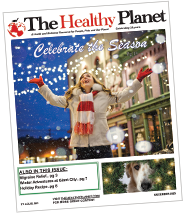Native landscapes exist in sharp contrast to many of their manicured counterparts. Those monocultures of lawn punctuated with a sentinel tree and a few trimmed bushes.
Most native landscapes include broad varieties of species. Problem solver plants, multi-season beauties, and low-maintenance workhorses. These interesting plants create diverse landscapes that change their appearance year-round. And, native plants evolved in their regions over time. Because of that, they have important relationships with local wildlife.
Food, cover and a place to rear young are critical if you want to support wildlife. Flowers provide nectar and pollen. Fruit, seeds and small insects offer vital nutrients and protein. And, it’s easy to understand the cover of a leafy branch. Native gardeners know that part of the beauty of their landscapes is that they’re alive with pollinators, birds and other watchable wildlife.
But, here’s a secret not all gardeners know. Fall and winter wildlife support is also key and can help its value to wildlife soar.
Even in winter, we’re surrounded by native bees and butterflies that ride out the winter. These pollinators hibernate like bears. But, they need help to survive until warm spring days.
Standing stems provide places for non-migrating pollinators to hibernate. Leaves, mulch and other litter also provide essential shelter. They attract hibernating bee queens and larvae of many butterfly and moth species. Beneficial insects, like lady beetles, are also sustained. And, here’s a bonus. When hungry lady beetles wake in spring, they’ll be ready to attack aphids in your garden.
Dig with care. If you plant winter or cover crops or plan to divide or move perennials keep digging shallow. Soil disturbances less than six inches are less likely to disturb native bee nests. About 70 percent of all bee species nest in the ground, often in yards and garden beds.
So, how do you make the messy landscape fit in with your tidy neighborhood year round?
Here are a few tips:
- Show intention – Frame your landscape beds with lawn strips and leave space between perennial groupings. Keep clean lines of sight. Use masses or drifts of single species rather than using one of everything. All this creates design rhythm and visual impact.
- Use different plant heights and types – Mix woodies and perennials. Front tall native shrubs with shorter perennials and grasses and clean edges. Height variation is more attractive and provides support to diverse wildlife.
- Incorporate hardscaping and containers – Key items define space, create different levels and add color (even white!) and texture.
- Spread the word – Let your neighborhood in on your mission. Chances are, a little education will bring understanding. And, maybe a few converts.
For all your native landscape needs from trees to wildflowers, see Forrest Keeling. Where the best native plants begin. www.ForrestKeeling.com


